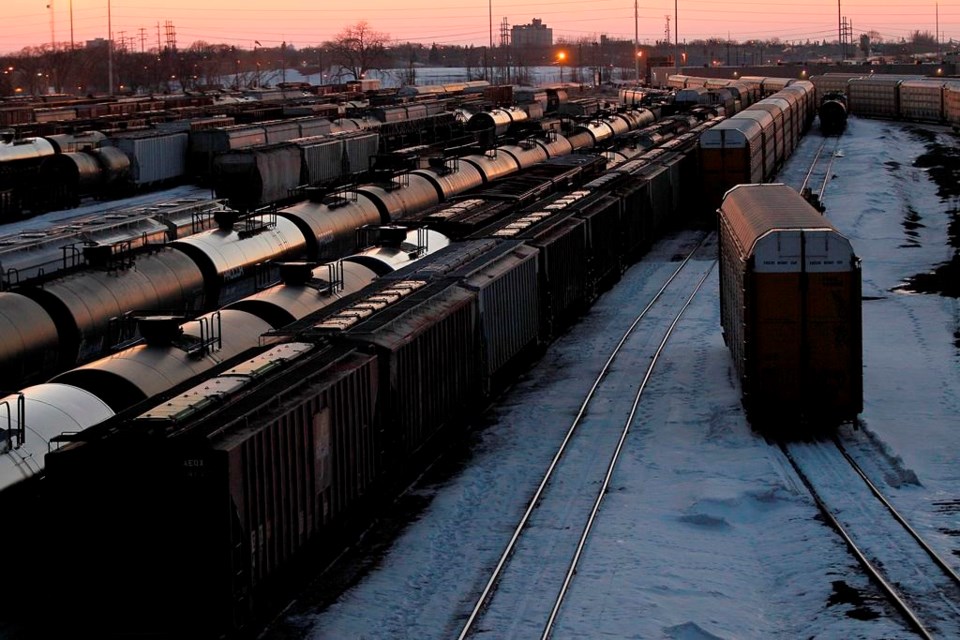WINNIPEG — It's been talked about for generations, and could cost more than $1 billion, but the idea of relocating the rail lines that criss-cross and divide Winnipeg is up for discussion again.
Manitoba Premier Wab Kinew says he wants to look at whether the project could be done incrementally.
"This is something that's a hugely expensive potential proposition. But maybe if we look at it in a decades-long timeline ... rather than a next-year timeline, then maybe it is realistic," Kinew said in a year-end interview.
Winnipeg Mayor Scott Gillingham said he wants the idea explored, and has recently discussed it with Kinew and federal cabinet minister Dan Vandal. Any changes would also involve the major railway companies.
"I know it would be a huge cost, ultimately — and complex — but I'm wondering if we could explore whether or not there are some underutilized rail lines and spur lines that perhaps could be the first areas that could be examined," Gillingham said.
Proponents of rail relocation say it would increase safety by no longer shipping hazardous materials through residential areas.Â
They also cite a desire to remove large rail yards that serve as barriers between neighbourhoods. The Arlington bridge, which runs over a rail yard that divides central Winnipeg from northern neighbourhoods, was recently shut down indefinitely due to its aging structure, leaving motorists and pedestrians to navigate long detours.
Gillingham says moving rail lines could also free up land for housing development.
Last April, former premier Heather Stefanson raised the idea again after several rail cars carrying bitumen left the track near a rail overpass that runs over McPhillips Street — a major route for commuters in the city’s northwest.
The idea of moving rail lines has been brought up since the 1960s, and rough price estimates have pegged the cost well upwards of $1 billion.
In 2016, the NDP government of the day promised to spend $400,000 on a study to look at the cost and feasibility of moving rail lines. The province hired former Quebec premier Jean Charest to lead the effort.
Months later, the Progressive Conservatives were elected and then-premier Brian Pallister axed the plan.
Kinew said he wants to take a new look at the idea in the coming year.
"The first step would have to be a plan that answers the question, 'is this feasible and if so, how could we pursue it in a way that's fiscally responsible'," Kinew said.
"I think a study and answering some of those questions, particularly within our current capital restraint that we have at the provincial level, would be time well-spent."
Another long-discussed infrastructure project in Winnipeg — opening the intersection of Portage Ave. and Main St — is not on Kinew's agenda.Â
The downtown intersection was closed to pedestrians in 1979. People wanting to cross are met with concrete barriers and forced underground into passageways that leave tourists confused and are hard to navigate for people in wheelchairs.
"This is not really one of our government's priorities right now. Health care ... the economy, the deficit. These are things that are occupying a significant amount of our time," Kinew said.
Kinew said he voted against opening the intersection in a municipal plebiscite held in conjunction with Winnipeg's civic election in 2018. Opponents of opening the intersection, who cited concerns such as increased traffic delays, won the vote.
This report by The Canadian Press was first published Dec. 28, 2023
Steve Lambert, The Canadian Press




